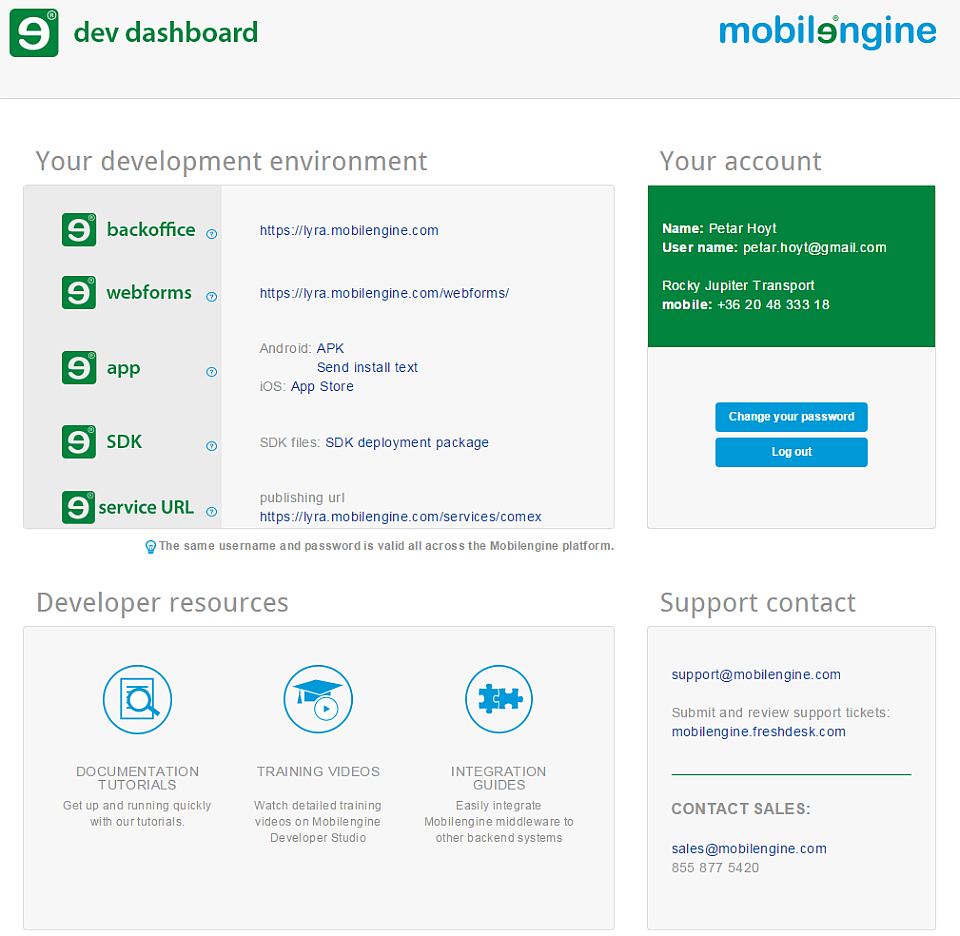The Mobilengine SDK that you'll be taking advantage of as a workflow solution developer includes platform services to compile, store, and manage, as well as several custom markup and scripting languages to build the workflow solutions to please your clients.
Workflow solutions are made up of solution artifacts that you'll create using nothing but a text editor, a spreadsheet application, and a working knowledge of the form-building, database-declaring, and cloud-scripting languages.
However, you'll need to compile and publish the solution artifacts to the Mobilengine Cloud before the workflow solutions can get synchronized to your users' mobile devices. You get the dedicated tool that can do this for you when you sign up for a Mobilengine dev account.
Apart from the solutions themselves, the Mobilengine Cloud also manages the complete backend of all your published solutions for you: the user-submitted data, the data that comes from one or more connected backend systems, and the details and settings of the users of your various solutions. The Mobilengine SDK includes an admin interface to the Cloud to help you keep track of, maintain, and troubleshoot your workflow solutions and their associated data.
To break it down, when you sign up, you'll have the following at your fingertips:
-
the Mobilengine Build Tool (
mebt) command-line application to compile, package, and deploy your solutions to the Mobilengine Cloudc:\RockyJupiter>mebt run . mobilengine srv 28.0 (Release) v28.0.38.19272 Executing run (compile and deploy to server): Service url: https://tutorial.mobilengine.com/services/comex/v1/ User: petar.hoyt@gmail.com adding 'vehicleInspection.form.xml' Reset integration settings Import form 'vehicleInspection' Done.
-
the personal Backoffice admin website to manage your backend: the solution data that you publish or your users submit, and the users of your solutions
-
the Developer Console tab on the Backoffice website to help you troubleshoot, debug, and monitor your solutions
-
the Webforms website that runs the desktop web apps that you create for non-mobile users
-
the Mobilengine mobile app that runs on your mobile users' smartphones and tablets, and displays the mobile forms to them
-
your personal Developer Dashboard that brings together all of the above resources for easy access, lets you manage your Mobilengine developer account, connects you directly to our support team, and lets you read and watch the documentation of the form markup, scripting, and database declaration languages in a one-stop-shop resource
What you need to do to get going:
-
sign up and activate your Mobilengine developer account
-
install the mebt tool to start creating workflow solution artifacts
-
install the mobile app on your mobile device (or desktop mobile device emulator) to test the workflow solutions before delivery
Head on to the tutorial, and get these few steps out of the way to start developing.




